Keynotes
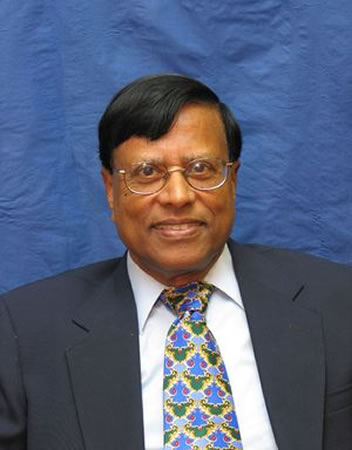
Prof. Dr. Raj Mittra
META-ATOMS AND METAMATERIALS FOR PERFORMANCE ENHANCEMENT OF ANTENNAS
Abstract: There has been an enormous research effort into artificially synthesized materials, aka ‘metamaterials’ that have novel and unusual material properties, and find suitable uses in many microwave and antenna applications, including performance enhancement of legacy antennas. In an attempt to produce a formalism that classifies these properties we introduce the concept of meta-atoms (MTAs), that are ‘meso’ scale particles, and have typical sizes much less than the wavelength at which the antenna will be operating. They could therefore be assembled to form synthetic materials of some predefined properties required for a particular application. A project entitled “Synthesizing 3D Metamaterials (MTMs) for RF, Microwave and THz Applications,” has been established in UK to study and classify these meta-atoms and produce structures that can be manufactured with Additive Manufacturing (AM) techniques, such as 3 D printing. This talk will focus on the topic of artificial synthesis of materials and present some real-world examples of their practical implementation. Unlike many of the previous works on MTMs, the focus of our work is on developing materials utilizing materials which operate away from the resonance range of the particles. Hence, they are not narrowband, dispersive, or lossy, as some of the early versions of the MTMs, e.g., Double-negative (DNG) or Zero-index (ZI) types, were reputed to be; and, consequently, they find wider range of applications in modern antenna design problems, as we will demonstrate via a number of illustrative examples.

Dr. Peter Uhd Jepsen
THZ
Ultrafast electron dynamics in strong THz fields
Abstract: Electron dynamics in semiconductor materials determine the properties of virtually all electronic devices. With shrinking dimensions and increasing operational frequency of contemporary and future transistors, knowledge of the behavior of electrons in strong, THz-frequency electric fields is becoming increasingly important. Shrinking gate lengths and operational voltages in present-day and future transistors dictate operational electric fields inside components of several hundred kV/cm, and this internal field strength with reach the MV/cm regime within the next 5-7 years. At such field strengths, highly nonlinear processes such as Zener tunneling, impact ionization and Auger scattering become relevant limiting factors for performance (see Fig. 1a). Additionally, long-term effects such as electromigration has decremental effects on device performance and lifetime, as illustrated in Fig. 1b. In this presentation I will discuss recent ultrafast experiments that address such strong-field physical effects in semiconductors and metals. We use intense sub-picosecond THz pulses to reach well into the relevant MV/cm regime, where we investigate tunneling of controllable, femtosecond-duration electron bunches from metallic structures into the surrounding medium (Fig. 1a), as well as nonlinear carrier generation and multiplication effects in bulk semiconductors. The short duration of the THz pulses allows us to apply field strengths well above the quasi-static breakdown fields, and thus to reach unexplored land.

Dr. Larry Williams
ANSYS
Disruptive Innovation through Engineering Simulation
Abstract: imagine if you could experience a newly designed product before building it. That is precisely what over 40,000 ANSYS customers do using advanced physics-based simulation. Engineered products from smart phones to industrial automation to autonomous vehicles are being experienced on the computer. In this presentation, Dr. Williams will show how great products are designed by engineers using advanced physics-based simulation, and how that technology has allowed individuals and companies to create disruptive products. The next great innovations come not only from highly-financed corporations but also from two energetic engineers in a garage. Industry examples will be highlighted.

Dr. Martin Vogel
Simulation Methods for 5G to address Large and Complicated Scenarios in Wireless Communications
Abstract: The future is wireless on many fronts: mobile communication, video streaming, internet access, autonomous cars, as well as device-to-device communication in the Internet of Things. Simulation in the design- and network-planning stages is crucial for successful deployment. Problem is that the geometries involved (office buildings, city blocks, terrain) are extrelemy large in terms of wavelengths and at the same time have high complexity. If one doesn't take enough detail into account, or if one uses methods that ignore important effects, then uncertainties of many tens of dB occur easily. This presentation will give an overview of simulation methods one can employ, in particular for 5G applications, and will give insight in the pros, cons, trade-offs and accuracies one can expect.
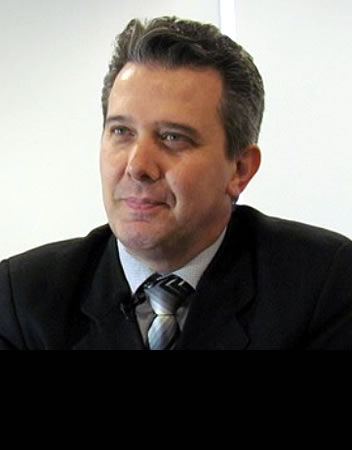
Dr. Maximiliano
Salvadori Martinhão
Dr. Maximiliano Salvadori Martinhão
Abstract: Engenheiro de Telecomunicações pelo INATEL, Bacharel em Direito pelo Instituto de Educação Superior de Brasília – IESB e Mestre em Gerência de Telecomunicações pela Universidade de Strathclyde (Reino Unido). É o atual Secretário de Desenvolvimento Tecnológico e Inovação do Ministério da Ciência, Tecnologia, Inovações e Comunicações/MCTIC, no qual executa as seguintes atividades: Coordena e acompanha a política nacional de desenvolvimento tecnológico e de inovação; articula e coordena a criação de programas nacionais de desenvolvimento e de inovação; supervisiona a política de incentivos fiscais para o desenvolvimento tecnológico e inovação, relacionados à Lei nº 11.196, de 21 de novembro de 2005; supervisiona o desenvolvimento e a consolidação de ambientes inovadores...
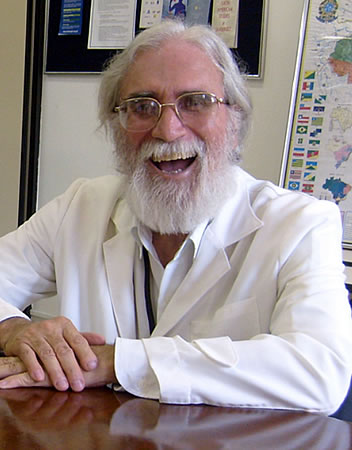
Jose Antonio
Justino Ribeiro
Epítome da Evolução nas Telecomunicações
Abstract: O texto é uma sinopse da evolução das telecomunicações a partir do final do século XVIII. Por essa época, começaram as apresentações dos primeiros métodos para envio de mensagens a longas distâncias envolvendo certos tipos de tecnologia. Procurou-se mostrar como o tempo de transmissão foi progressivamente reduzido, superando antigos procedimentos que utilizavam mensageiros, correio a cavalo, pombo-correio, ou certos sistemas sonoros ou visuais. Salientaram-se os avanços de métodos, de processos e suas conseqüências no contínuo bem-estar dos usuários. Destaca-se o papel relevante na aproximação dos povos e das comunidades, bem como sua grande atuação no progresso das nações. São apresentadas as contribuições de inventores, pesquisadores e empreendedores. Descreve-se o advento de recursos tecnológicos e científicos que foram fundamentais na modernização e no aumento da eficácia dos equipamentos. Mostra-se, também, como foram transferidos os inventos e seus respectivos aperfeiçoamentos para o parque industrial brasileiro.

Prof. Dr. Raj Mittra
META-ATOMS AND METAMATERIALS FOR PERFORMANCE ENHANCEMENT OF ANTENNAS
Short Bio: joined Penn State in 1996. He is the Director of the Electromagnetic Communication Laboratory. Prior to joining Penn State, he was a Professor in Electrical and Computer Engineering at the University of Illinois. He is a Life Fellow of the IEEE, a Past-President of AP-S, and he has served as the Editor of the Transactions of the Antennas and Propagation Society. He has been a Visiting Professor at Oxford University and the Technical University of Denmark. He is the President of RM Associates, which is a consulting organization that provides services to industrial and governmental organizations. He has published over 700 journal papers and more than 35 books or book chapters. He also has three patents in communication antennas.

Dr. Peter Uhd Jepsen
THZ
Ultrafast electron dynamics in strong THz fields
Short Bio: Peter Uhd Jepsen has been active in the field of THz science and technology since 1993. During his career he has worked with fundamental aspects of generation, propagation, and detection of short pulses of coherent THz radiation. In 1995 he and his team in Freiburg were among the first to demonstrate free-space electro-optic sampling of ultrafast THz signals, a technique which since has become one of the few available standard THz detection techniques. He has then used coherent THz light for ultrafast spectroscopy in semiconductor materials and electro-optic materials. In 2000 he and his team were the first to demonstrate the rich THz vibrational spectrum of organic molecules in crystalline form.
This work was one of the initiators of the current interest in a wide range of applications of THz radiation. After he was awarded the Habilitation for his work in THz science and technology at the University of Freiburg in 2003, he received a Skou Stipend from the Danish Research Council in 2004. Since 2005 he has been at COM•DTU at the Technical University of Denmark, where he is leading the THz Science and Technology group. He received Elektrofondets Elektropris in May 2007 for his contributions to THz science and technology. Since 2008 he is Professor at the Technical University of Denmark where he heads the enthusiastic team of scientists in the Terahertz Technologies & Biophotonics research group.
Peter Uhd Jepsen has supervised 16 Master projects and 14 Ph.D. projects. He has published more than 66 peer-reviewed papers in leading international journals on THz science and technology, and given numerous invited talks at international conferences.
Specialties: Terahertz science and technology, ultrafast optics, nonlinear frequency conversion, development of novel sensing applications, supervision of Ph.D. and Master students, scuba diving.

Dr. Larry Williams
ANSYS
Disruptive Innovation through Engineering Simulation
Short Bio: is Director of Product Management at ANSYS Inc., Electronics Business Unit. He is responsible for the strategic direction of the company's electrical and electronics products, including the High Frequency Structure Simulator (HFSS) and Maxwell finite element simulators. Dr. Williams is an expert in the application of electromagnetic field simulation to the design of antennas, electromagnetic devices, and high-speed electronics. He has over 20 years' experience in the fields of electromagnetics and communications engineering, has delivered technical lectures internationally, and has published numerous technical papers on the subject. He and his co-authors won the prestigious H.A. Wheeler Prize Paper Award in the IEEE Transactions on Antennas and Propagation, 1995, and the best paper award at DesignCon 2005. He serves on the UC Irvine Henry Samueli School of Engineering Dean's Advisory Board and on the California State Polytechnic University Electrical Engineering Department Advisory Board.
Dr. Williams held various senior engineering positions in the Engineering Division of Hughes Aircraft Company, Radar Systems Group, where he was responsible for hardware design and development of advanced active phased array radar antennas, array element and aperture design, associated microwave subsystems, and antenna metrology.
He received his Masters, Engineers, and Ph.D. degrees from UCLA in 1989, 1993 and 1995, respectively.

Dr. Martin Vogel
Simulation Methods for 5G to address Large and Complicated Scenarios in Wireless Communications
Short Bio: Dr. Martin Vogel is Principal Application Engineer and WinProp Program Manager at Altair Engineering, Inc. He obtained his MSc in Physics and his PhD in Electromagnetics in the Netherlands. He has worked on RCS, antenna and propagation applications for TNO Defense, Saety and Security in the Netherlands, and had a one-year assignment at the US Air Force Research Laboratory at Kirtland Air Force Base in the USA. He has worked at ANSYS on high-frequency and signal-integrity applications in various roles. After a sabbattical abroad, he joined Altair Engineering in 2013.

Dr. Maximiliano
Salvadori Martinhão
Dr. Maximiliano Salvadori Martinhão
Short Bio: Engenheiro de Telecomunicações pelo INATEL, Bacharel em Direito pelo Instituto de Educação Superior de Brasília – IESB e Mestre em Gerência de Telecomunicações pela Universidade de Strathclyde (Reino Unido). É o atual Secretário de Desenvolvimento Tecnológico e Inovação do Ministério da Ciência, Tecnologia, Inovações e Comunicações/MCTIC, no qual executa as seguintes atividades: Coordena e acompanha a política nacional de desenvolvimento tecnológico e de inovação; articula e coordena a criação de programas nacionais de desenvolvimento e de inovação; supervisiona a política de incentivos fiscais para o desenvolvimento tecnológico e inovação, relacionados à Lei nº 11.196, de 21 de novembro de 2005; supervisiona o desenvolvimento e a consolidação de ambientes inovadores; supervisiona ações voltadas para o empreendedorismo de base tecnológica, propõe a formulação de políticas públicas orientadas para o desenvolvimento tecnológico e a inovação; propõe programas, projetos, ações e estudos que subsidiem a formulação e a implementação de políticas de estimulo e programas de desenvolvimento tecnológico e inovação; estabelece em articulação com a Secretaria-Executiva, metodologias de acompanhamento e avaliaçã da execução de políticas, programas, programas, projetos e atividades; desenvolve as atividades de execução orçamentária, financeira, contábil e patrimonial no âmbito da SETEC; assiste tecnicamente a Secretaria-Executiva na elaboração e nas revisões no Plano Plurianual e do Orçamento Anual e assiste tecnicamente os órgãos colegiados na área de atuação da SETEC.

Jose Antonio
Justino Ribeiro
Epítome da Evolução nas Telecomunicações
Short Bio: Nasceu em Mimoso do Sul – Estado do Espírito Santo em 1946. É Engenheiro Eletricista e de Telecomunicações pelo Instituto Nacional de Telecomunicações de Santa Rita do Sapucaí (Inatel). Obteve os graus de Mestre em Engenharia Eletrônica e Doutor em Ciência em Engenharia Eletrônica e Computação pelo Instituto Tecnológico de Aeronáutica (ITA), de São José dos Campos – SP. Iniciou suas atividades docentes em 1965, na Escola Técnica de Eletrônica Francisco Moreira da Costa (ETE), de Santa Rita do Sapucaí, onde trabalhou por 52 anos. Ingressou no magistério superior no Inatel em 1968, como monitor de disciplinas da área de Eletrônica. Passou a Professor Auxiliar em 1970, a Professor Assistente em 1972 e em 1978 foi promovido a Professor Titular, com aprovação do Conselho Federal de Educação. Ingressou na Escola Federal de Engenharia de Itajubá (EFEI) em 1973 como Auxiliar de Ensino e foi promovido por concurso público a Professor Assistente em 1980. Passou por diversos níveis de Professor Assistente e Professor Adjunto e chegou a Professor Titular em 1990, novamente por concurso público. Entre 1985 e 1990 foi Chefe do Departamento de Telecomunicações do Inatel. Possui várias publicações de caráter técnico e científico como autor ou coautor. Por mais de 50 anos tem-se dedicado a diferentes disciplinas na área de telecomunicações, ministrando cursos de graduação, de pós-graduação, de aperfeiçoamento e de extensão. Apresentou várias conferências e palestras em congressos, seminários e encontros relacionados à engenharia de telecomunicações. Seu interesse principal relaciona-se à teoria eletromagnética aplicada, no que diz respeito a antenas, propagação de ondas eletromagnéticas, microondas e comunicações ópticas. Tem atuado como revisor de artigos em diferentes congressos e publicações nacionais e internacionais, é membro fundador da Sociedade Brasileira de Microondas e Optoeletrônica (SBMO), membro da Sociedade Brasileira de Automática, do Institute of Electrical and Electronic Engineers (IEEE) e da International Society for Optical Engineering (SPIE).
Realização
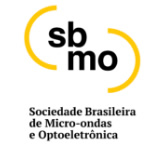


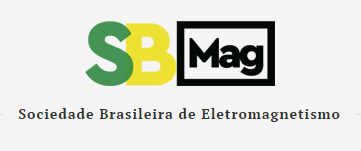
Diamante

Ouro

Prata





Bronze


Apoio


